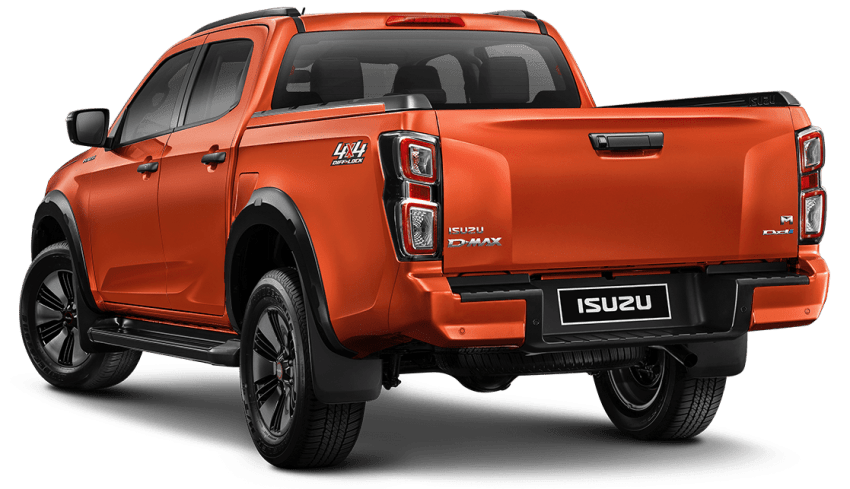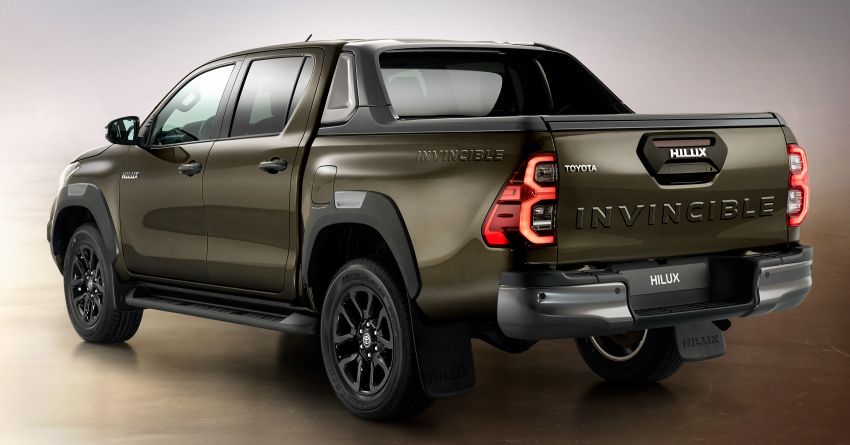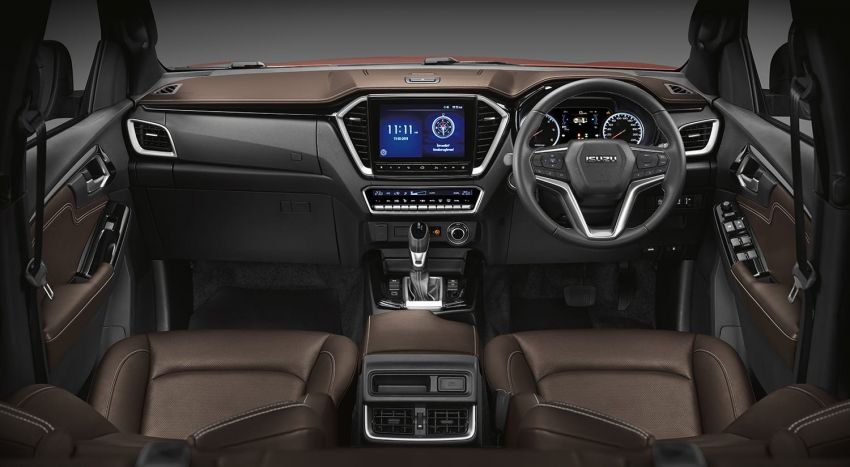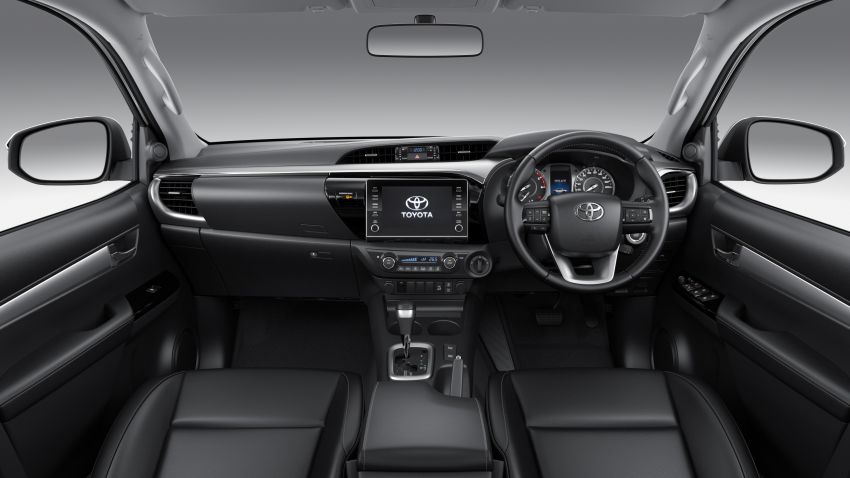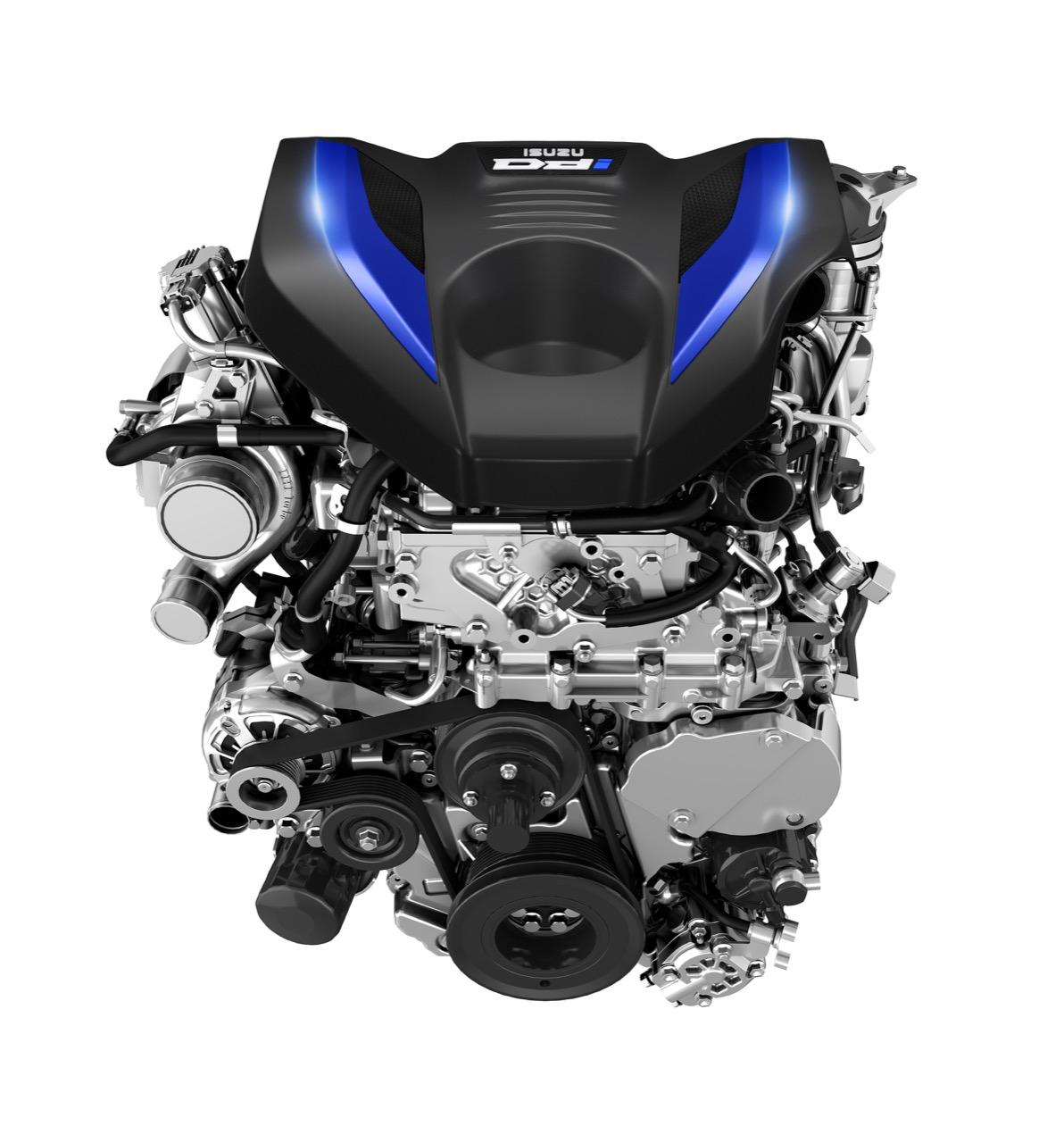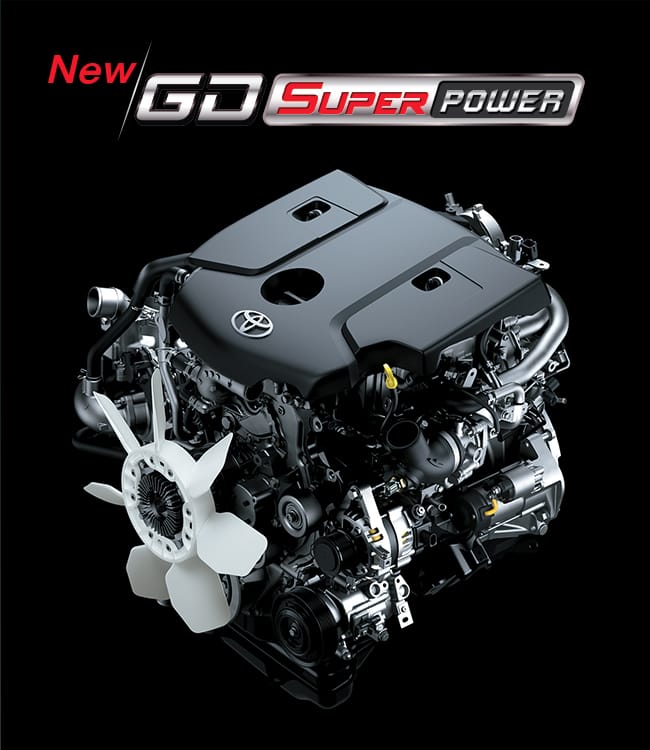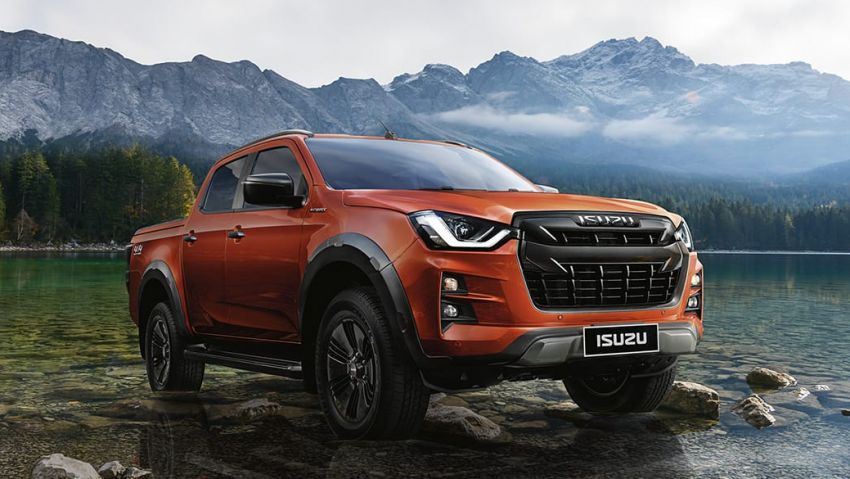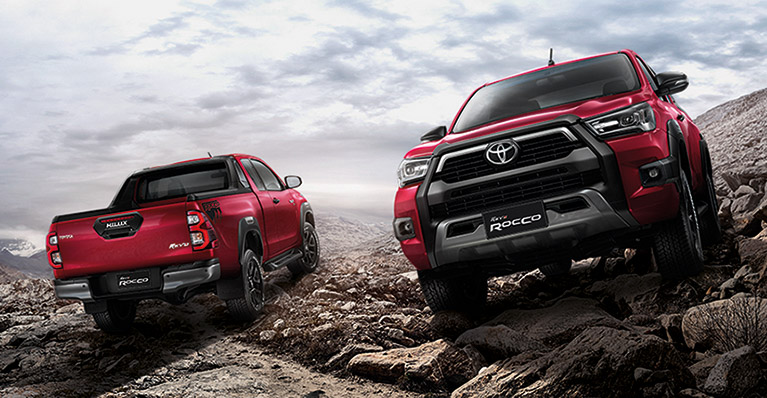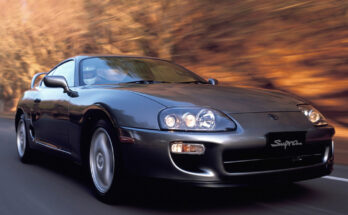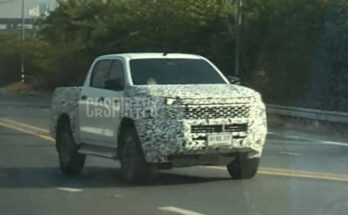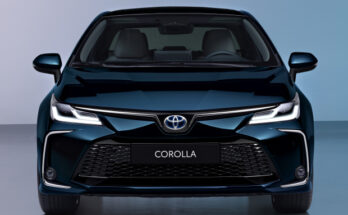For long Toyota Hilux had enjoyed an unparalleled success in our market. It is considered as a lone champion in pickup truck segment, however since November 2018 it has seen a competitor in the form of Isuzu D-MAX.
Related: Isuzu D-Max and Toyota Hilux Sales Comparison
Although the D-MAX is far from becoming a threat for Hilux as far as sales are concerned, it has certainly started to eat some of Hilux’s market share. Both these pickup trucks compete against each other in several markets and both have recently received a thorough upgrade. While the Isuzu D-Max entered its 3rd generation late last year, the Hilux has recently been blessed with a thorough facelift with a number of improvements to offer. Let’s see how much these two stacks up against each other on papers.
Exterior
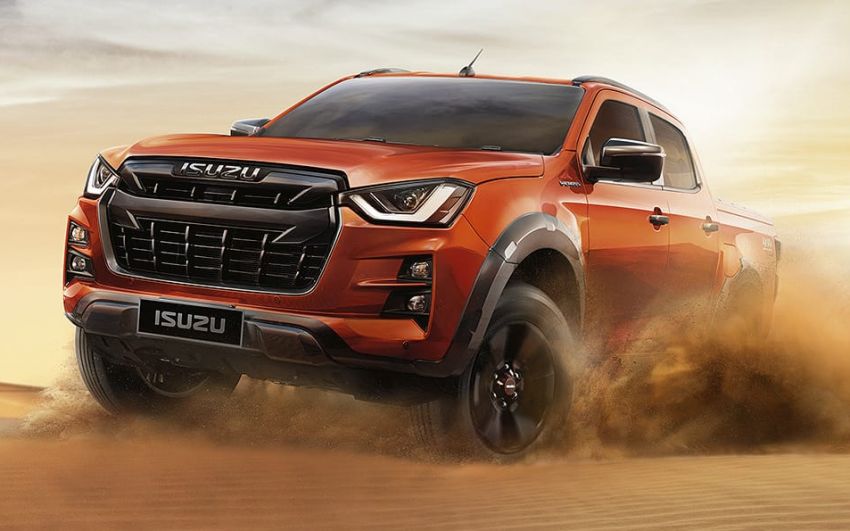
The exterior of the new Isuzu D-MAX has seen a thorough revamp. It now gets LED headlights and taillights, a stylized grille design that’s incorporated into a heavily-revised fascia along with some black accents that helps it look bolder & more aggressive than before.
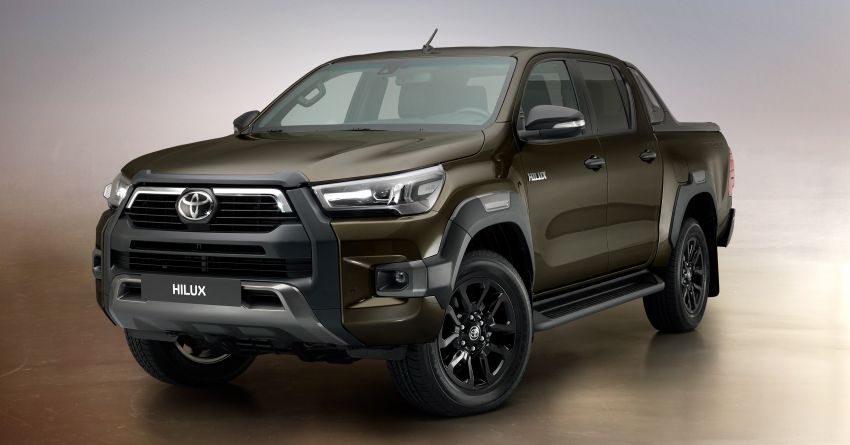
On the other hand there isn’t a lot different with the 2020 Hilux facelift’s looks, however it does get a slightly larger grille, new headlights and taillights as well as some new wheels, bringing it closer to the looks of its bigger sibling Tacoma that’s sold in North American markets.
Dimensions
In terms of dimensions, the new Isuzu D-MAX (double cabin) measures 5,265mm long, 1,870mm wide and 1,790mm tall, making it 30mm shorter, 10mm wider and 5mm lower than the one we have here. Its 3,125mm wheelbase is also 30mm longer than the outgoing model.
On the other hand the Toyota Hilux measures 5,335mm in length, 1,855mm in width and 1,815mm in height while having a wheelbase of 3,085mm. As a result, the Hilux is marginally longer and taller in height than the Isuzu whereas the new D-Max has a longer wheelbase and is wider than its Toyota rival.
Interior
As for interior, the 3rd gen Isuzu D-MAX is a huge improvement over the 2nd gen model we have here, in terms of appearance, comfort, quality as well as equipment. There is a 9-inch infotainment touchscreen with Apple CarPlay and Android Auto connectivity & there is a smaller digital multi-information display nestled between the meter dials. Plus there is dual-zone climate control, rear air vents, 8 speakers, leather seats and keyless entry being some other highlights of the new D-MAX’s updated specifications. Safety set includes 6 airbags, seat belt reminders and blind spot monitoring with rear cross traffic alert for the first time, in addition to walk-away automatic locking, remote engine start, welcome and follow-me-home lighting, voice control & dual-zone automatic climate control with rear vents, auto lights and wipers with integrated washers for uninterrupted visibility.
Being a facelift, the interior of Hilux isn’t much different than the existing model however there are improvements in form of an 8.0-inch touchscreen with Smartphone mirroring for Apple CarPlay and Android Auto, 4.2 inch multi-information display and safety inclusions such as active cruise control, lane keep assist, pedestrian detection and front & rear parking sensors etc.
Engine
Both D-MAX and Hilux gets improvements under the hood including a power boost as far as the engines are concerned. The 3.0 liter 4JJ3-TCX engine in the D-MAX generates 190 hp and 450 Nm of torque which is 13 hp and 70 Nm more than that of the old 4JJ1-TCX. Plus it gets optimized gear ratios and control systems for improved acceleration and other mechanical improvements making it more fuel-efficient and quieter than the existing engine.
Similarly, the 2.8 liter 1GD-FTV engine in Hilux gets a power boost which now churns out 204 hp and 500 Nm of torque, which is more than the previously available 177 hp and 450 Nm. Toyota claims the new Hilux will get from 0to 100 km/h in 10 seconds, while returning an average fuel consumption of 7.8 liters/100 km.
Other improvements
The new D-MAX rides on a new Isuzu Dynamic Drive Platform, and while it still utilizes body-on-frame construction, the ladder frame itself has seen a great number of improvements including suspension, steering & stability. Also new for D-Max is the electromagnetic rear differentials lock that makes things little easier off-road, while Isuzu has also made some changes to shorten the time required to switch between 2WD and 4WD modes. Wading depth is increased by 200 mm to reach 800mm in total whereas hill descent control and hill start assist is added to aid in off-roading scenarios.
Related: 50 Years of Toyota Hilux
Suspension upgrades in Hilux includes revised shock absorbers, new bushings and an improved leaf spring design to provide a more comfortable ride, particularly over rough roads and with low loads. Toyota will also add an additional traction control function to 4×4 Hilux models equipped with downhill-assist control, which reroutes torque in 2WD mode to provide more grip.
Both new Toyota Hilux and 3rd gen Isuzu D-MAX offers a lot of improvements over the outgoing models. However we will have to wait and see when these updated models will arrive in our market. The local auto sector is struggling through a patchy period with sales which were already suffering due to rising prices have almost come to a halt because of COVID-19 pandemic. Plus the government in recently announced financial budget has imposed additional 7.5% FED on local assembled 4×4 pickup trucks which will see prices of both Hilux and D-MAX increased and is expected to further dent the sales of the two.
Related: Toyota Hilux Revo and Isuzu D-MAX Prices to Increase Under Budget 2020-21
From the looks of it we can’t expect these updated models to arrive in our market before 2021, however we do hope that the situation will improve by then. Which one of these two do you think will fare well in our market; let us know with your comments.

A computer animation professional with over 23 years of industry experience having served in leading organizations, TV channels & production facilities in Pakistan. An avid car enthusiast and petrolhead with an affection to deliver quality content to help shape opinions. Formerly written for PakWheels as well as major publications including Dawn. Founder of CarSpiritPK.com

